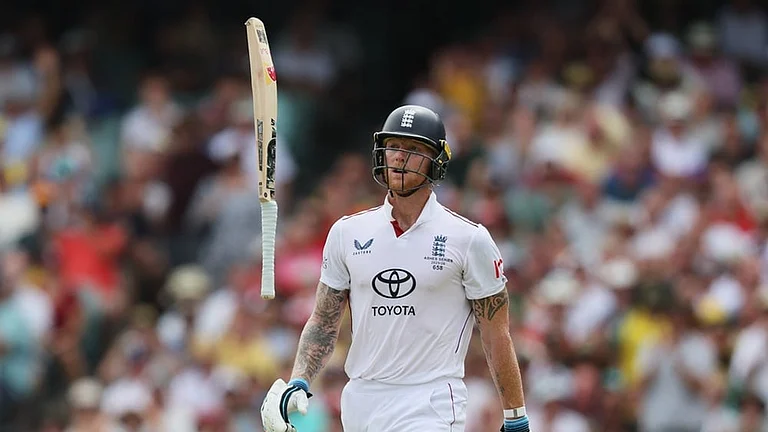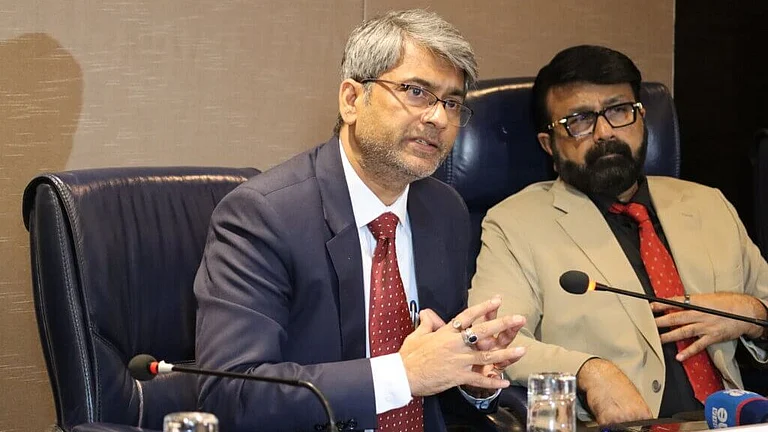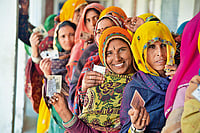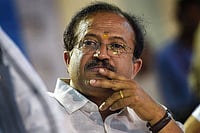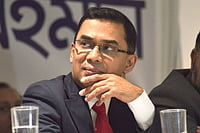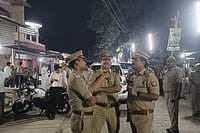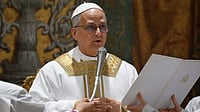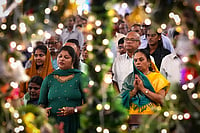How long did it take you?
In four years I found I had shot 125 sets of twins!
How did you trace all of them?
Mostly by talking to the British sets of twins. They told me of others in Gujarat. AllPatels come from around 238 villages in the Charotar area. Sardar Patel, for instance,came from Karamsad. I went to about 40 of the villages and stopped when I felt I hadenough. I stayed with a Patel relative and came across most of my subjects through word ofmouth. The local taxi driver helped a lot.
Did you start this project thinking it would be a book?
No. It was Raghubir Singh, who was a very close friend, who first saw a book in the earlypictures. Right from the start, when nobody but my husband had seen the work, Raghubirkept dropping in and he said it was the best work I'd ever done and pressed me tokeep at it till I found a publisher. He'd silence my doubts by saying when you have aproject like this, you'll always find someone to publish it. It took a while findingone, but I did.
Why are there so many twins amongst the Patels?
I don't know. I haven't researched it, but I did read up a lot about twins andapparently two people, that is, one set out of every 300 in any population are identicaltwins; and two people, that is, one set out of 90 are fraternal twins. That's themean average, but in some countries like Japan it's lower, and in Africa it'shigher.
Were the Patels themselves aware of the fact that there are so many twinsamongst them?
No. But they're such a large community and if you take the mean average in whichtwins happen, perhaps it's not so surprising that there are so many Patel twins.
So would any other large community also have the same phenomenon?
I don't really know. I haven't done a comparative study. I didn't approachit as an anthropologist.
Apart from the pure curiosity value, what did you want to capture in the book?
It was one way of digging my teeth into a community, get involved with it. It'sdifferent when you know people socially, different when you photograph them. It'smuch more intimate-you go into their homes and capture their ambience. The Patels areessentially farmers and were the first to move in large numbers to East Africa, from wherethey further migrated to the US and UK.Now the second-generation immigrants in England are increasingly becoming professionals and in America where the Patels were known as motel keepers, their children are accountants, doctors, engineers. It was very interesting and I've put in some of their personal histories in the biographical details at the back of the book.
Were there any surprising moments, insights?
Well, every bit of it, every single day was enjoyable. What was interesting though was the difference in the way twins are looked at abroad and here. They're much more talked about in the US and UK. They feature on talk shows and are asked to describe how they feel about each other; here they're treated as ordinary siblings.







